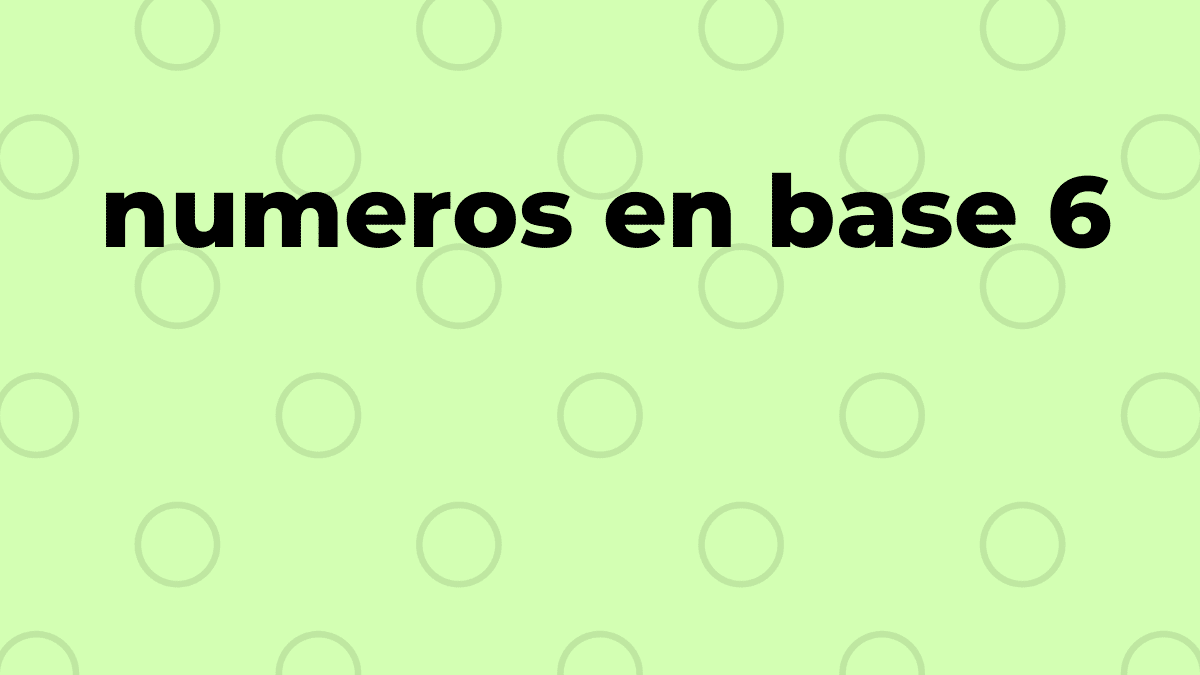
Numbering in different bases has always been an interesting and challenging subject for mathematicians and linguists alike. In this article, we'll delve into one particular number system: base 6, or senary notation. This number system is especially attractive because of its unique applications and the mathematical properties that make it different from our familiar decimal system.
Origins of the base 6
The choice of base 6 as a numeral system is not accidental. Throughout history, various cultures have adopted number systems based on 6. A notable example is the ancient Sumerian civilization, which used a sexagesimal system, that is, a system with base 60, which is a multiple of 6.
In the base 6 system, there are only six digits to represent numbers (0, 1, 2, 3, 4, and 5). This means that instead of counting from 0 to 9 as we do in the decimal system, here we count from 0 to 5 before moving on to the next positional level. A clear example is the sequence of numbers in base 6 that goes from 0 to 15, which has the following form:
0 (zero) – 1 (one) – 2 (two) – 3 (three) – 4 (four) – 5 (five) – 10 (six) – 11 (seven) – 12 (eight) – 13 (nine) – 14 (ten) – 15 (eleven) – 20 (twelve) – 21 (thirteen) – 22 (fourteen) – 23 (fifteen).
Conversion between senary and decimal
Converting base 6 numbers to base 10 numbers is a simple and straightforward process. We just follow the same steps as for any other numbering system with a different base. For example, suppose we want to convert the serial number 213 to a base 10 number. We would proceed as follows:
- We decompose the number 213 into its positions: 2 * (6^2) + 1 * (6^1) + 3 * (6^0) = 72 + 6 + 3.
- We add the resulting quantities: 72 + 6 + 3 = 81.
- Therefore, the senatorial number 213 is equivalent to the decimal number 81.
Interesting Mathematical Properties of Base 6
The base 6 number system has some interesting mathematical properties. which are unique and different from our decimal system. Some of these properties include:
1. Divisibility: In a base 6 number, a number is divisible by 2 if its last digit is even (0, 2 or 4) and divisible by 3 if its last digit is 0 or 3. This property facilitates arithmetic operations in this system.
2. Sum of digits: As in all positional numeral systems, the sum of digits of a base 6 number is important in determining divisibility by certain numbers. For example, a number is divisible by 6 if the sum of its digits is divisible by 6.
Core 6 Applications
Although senary notation is not as commonly used in our day-to-day life as decimal notation, it still has some practical applications. These include:
- Computing: Base 6 can be used in computational logic and hardware architecture as an alternative to base 2 (binary) or base 10 (decimal). The senary notation allows to represent information in a more compact way than the decimal system.
- Communication: In certain fields of research, such as linguistics, base 6 notation can be considered as an efficient form of numerical communication between different cultures and systems.
- Art and music: The division of space and time into intervals based on the number 6 is common in various artistic and musical traditions throughout the world.
The future of base 6
Although base 6 is not as prevalent as base 10 in the modern world, its unique mathematical properties and applications give it intrinsic value and historical significance. As humanity continues to explore new areas of knowledge and technology, it is possible that base 6 will find a place in future research and innovation. Studying number systems like base 6 allows us to broaden our mathematical knowledge and gain greater perspective on the many systems that can effectively transmit and organize information in our world.



